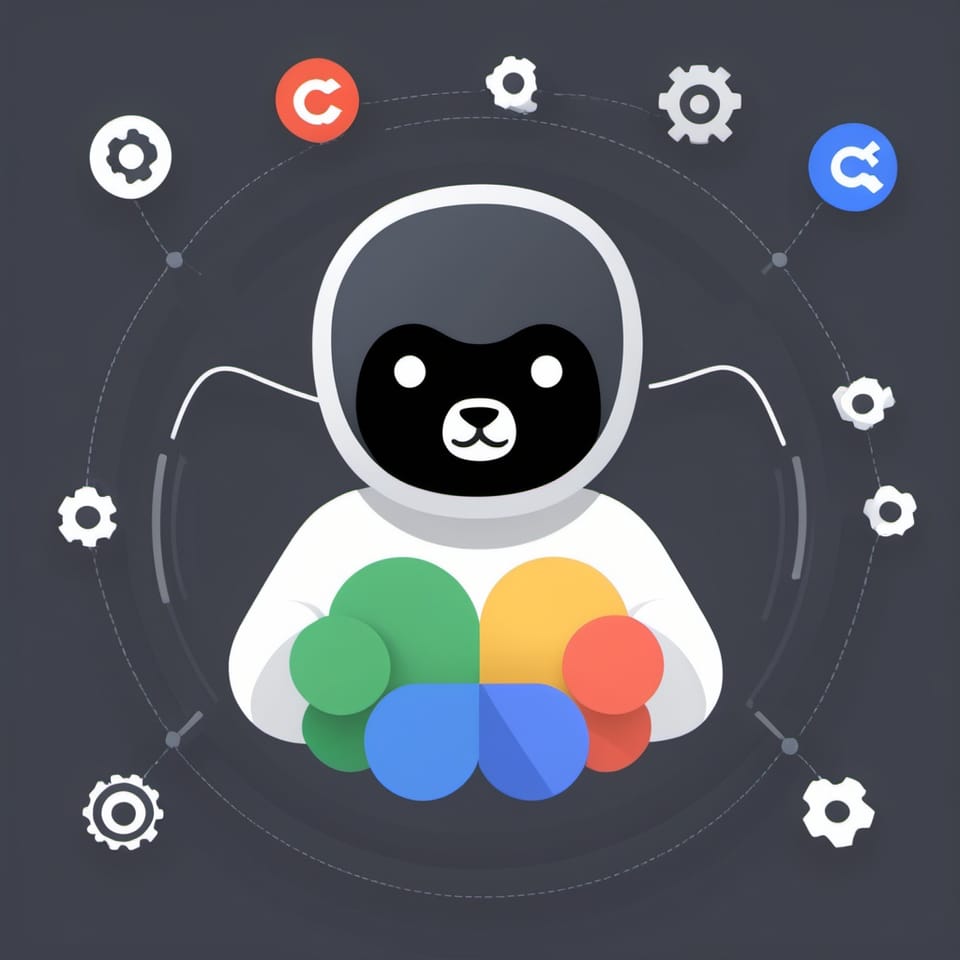Automating Development, Staging, and Production Workflows with GitHub Actions and GCP

In today’s fast-paced development environments, maintaining consistency and efficiency across development, staging, and production workflows is essential. By using GitHub Actions and Google Cloud Platform (GCP), you can create a robust CI/CD pipeline that builds, tests, and deploys your application while following the DRY (Don’t Repeat Yourself) principle. This post outlines how to automate workflows for building and publishing Python packages and Docker images across dev, staging, and production environments using independent GCP projects.
The Goal
The pipeline achieves the following:
- Development Environment:
- Builds and tests the code when a Pull Request (PR) is opened or updated.
- Pushes the Docker image to a development GCP project registry.
- Staging Environment:
- Builds, tests, and deploys the application when code is merged into the
mainbranch. - Pushes the Docker image to the staging GCP project registry.
- Builds, tests, and deploys the application when code is merged into the
- Production Environment:
- Manually promotes the staging image to production after approval.
- Deploys the Docker image to the production environment.
Environment Setup
Development
- Purpose: Validate code changes early through automated testing and Docker builds.
- GCP Project:
gcp-dev-project - Registry:
gcr.io/gcp-dev-project - Trigger: PR opened or updated.
Staging
- Purpose: Simulate the production environment for final validation.
- GCP Project:
gcp-stg-project - Registry:
gcr.io/gcp-stg-project - Trigger: Merge into
mainbranch.
Production
- Purpose: Serve end-users with the live application.
- GCP Project:
gcp-prd-project - Registry:
gcr.io/gcp-prd-project - Trigger: Manual approval and promotion.
Workflow Definitions
Development Workflow
The development workflow focuses on validating code changes by running tests and building Docker images.
Key Steps:
- Checkout the code from the PR.
- Set up the Python environment and install dependencies.
- Run unit and integration tests.
- Build a Docker image and tag it as
dev-<commit-sha>. - Push the image to
gcr.io/gcp-dev-project.
GitHub Actions Configuration:
name: Development Workflow
on:
pull_request:
types: [opened, synchronize]
jobs:
build-and-test:
runs-on: ubuntu-latest
steps:
- name: Checkout code
uses: actions/checkout@v2
- name: Set up Python
uses: actions/setup-python@v2
with:
python-version: '3.8'
- name: Install dependencies
run: pip install -r requirements.txt
- name: Run tests
run: pytest
- name: Build Docker image
run: docker build -t gcr.io/$GCP_DEV_PROJECT/my-app:dev-${{ github.sha }} .
- name: Push Docker image
run: |
echo ${{ secrets.GCP_DEV_SERVICE_ACCOUNT_KEY }} | docker login -u _json_key --password-stdin https://gcr.io
docker push gcr.io/$GCP_DEV_PROJECT/my-app:dev-${{ github.sha }}Staging Workflow
The staging workflow ensures that the application functions as expected in a production-like environment.
Key Steps:
- Checkout the latest code from the
mainbranch. - Run tests to confirm stability.
- Build a Docker image and tag it as
stg-<commit-sha>. - Push the image to
gcr.io/gcp-stg-project. - Deploy the image to the staging environment.
GitHub Actions Configuration:
name: Staging Workflow
on:
push:
branches:
- main
jobs:
build-and-deploy:
runs-on: ubuntu-latest
steps:
- name: Checkout code
uses: actions/checkout@v2
- name: Set up Python
uses: actions/setup-python@v2
with:
python-version: '3.8'
- name: Install dependencies
run: pip install -r requirements.txt
- name: Run tests
run: pytest
- name: Build Docker image
run: docker build -t gcr.io/$GCP_STG_PROJECT/my-app:stg-${{ github.sha }} .
- name: Push Docker image
run: |
echo ${{ secrets.GCP_STG_SERVICE_ACCOUNT_KEY }} | docker login -u _json_key --password-stdin https://gcr.io
docker push gcr.io/$GCP_STG_PROJECT/my-app:stg-${{ github.sha }}
- name: Deploy to Staging
run: |
gcloud auth activate-service-account --key-file=${{ secrets.GCP_STG_SERVICE_ACCOUNT_KEY }}
gcloud config set project gcp-stg-project
gcloud run deploy my-app --image=gcr.io/$GCP_STG_PROJECT/my-app:stg-${{ github.sha }} --region=$GCP_REGIONProduction Workflow
The production workflow promotes a validated staging image to production.
Key Steps:
- Pull the Docker image from staging.
- Tag the image as
prd-<commit-sha>. - Push the image to
gcr.io/gcp-prd-project. - Deploy the image to the production environment.
GitHub Actions Configuration:
name: Production Workflow
on:
workflow_dispatch:
jobs:
promote-and-deploy:
runs-on: ubuntu-latest
steps:
- name: Pull Staging Image
run: docker pull gcr.io/$GCP_STG_PROJECT/my-app:stg-${{ github.sha }}
- name: Tag Production Image
run: docker tag gcr.io/$GCP_STG_PROJECT/my-app:stg-${{ github.sha }} gcr.io/$GCP_PRD_PROJECT/my-app:prd-${{ github.sha }}
- name: Push Production Image
run: |
echo ${{ secrets.GCP_PRD_SERVICE_ACCOUNT_KEY }} | docker login -u _json_key --password-stdin https://gcr.io
docker push gcr.io/$GCP_PRD_PROJECT/my-app:prd-${{ github.sha }}
- name: Deploy to Production
run: |
gcloud auth activate-service-account --key-file=${{ secrets.GCP_PRD_SERVICE_ACCOUNT_KEY }}
gcloud config set project gcp-prd-project
gcloud run deploy my-app --image=gcr.io/gcp-prd-project/my-app:prd-${{ github.sha }} --region=$GCP_REGIONBenefits of This Workflow
- Environment Isolation: Separate GCP projects ensure development, staging, and production environments do not interfere with each other.
- Automation with Control: Automated deployments for dev and staging reduce manual errors, while manual promotion to production ensures control over critical changes.
- Reusability: Common steps, such as Docker builds and tests, follow the DRY principle to minimize repetition.
- Flexibility: Workflows are designed to be extensible and customizable as requirements evolve.
With this setup, you can ensure a streamlined, reliable, and scalable CI/CD pipeline that keeps your development process efficient and your production environment stable.




